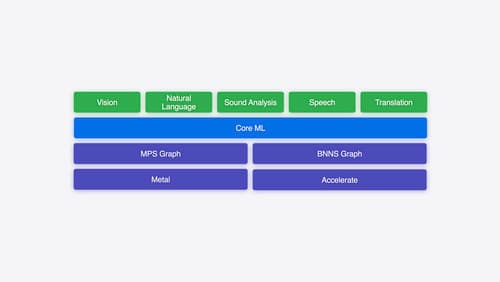CoreML basics
Asked on 2025-06-16
1 search
Core ML is a framework that simplifies the integration of machine learning models into apps on Apple platforms. It allows developers to use models in the Core ML format, which includes a description of the model's inputs, outputs, architecture, and learned parameters. Core ML optimizes execution across the CPU, GPU, and neural engine, making it a powerful tool for deploying models on-device.
For those new to Core ML, the process typically involves:
-
Model Preparation: Start with a trained model, often in a format like PyTorch or TensorFlow, and convert it to the Core ML format using Core ML Tools. This conversion process can include optimizations for on-device execution, such as operation fusion and model compression.
-
Integration with Xcode: Once in the Core ML format, the model can be integrated into an app using Xcode. Xcode provides tools to inspect the model's characteristics, visualize its architecture, and generate a type-safe Swift interface for easy integration.
-
Execution and Optimization: Core ML automatically optimizes model execution across available hardware resources. Developers can also use additional frameworks like Metal Performance Shaders (MPS) and BNNS Graph for more control over execution, especially in scenarios involving graphics workloads or real-time processing.
For more detailed information on Core ML and its capabilities, you can refer to the session Discover machine learning & AI frameworks on Apple platforms (11:15) from WWDC 2025.

Discover machine learning & AI frameworks on Apple platforms
Tour the latest updates to machine learning and AI frameworks available on Apple platforms. Whether you are an app developer ready to tap into Apple Intelligence, an ML engineer optimizing models for on-device deployment, or an AI enthusiast exploring the frontier of what is possible, we’ll offer guidance to help select the right tools for your needs.

Explore machine learning on Apple platforms
Get started with an overview of machine learning frameworks on Apple platforms. Whether you’re implementing your first ML model, or an ML expert, we’ll offer guidance to help you select the right framework for your app’s needs.

Deploy machine learning and AI models on-device with Core ML
Learn new ways to optimize speed and memory performance when you convert and run machine learning and AI models through Core ML. We’ll cover new options for model representations, performance insights, execution, and model stitching which can be used together to create compelling and private on-device experiences.
